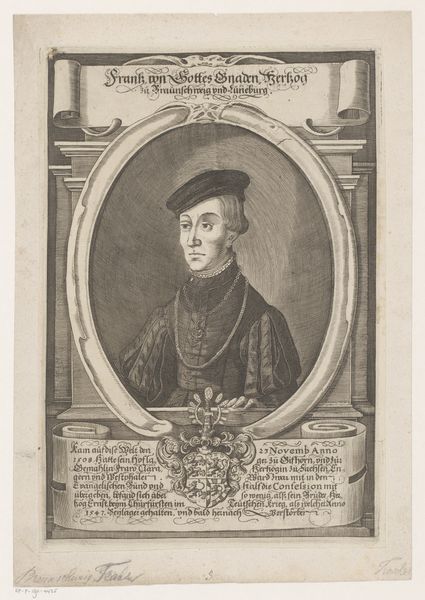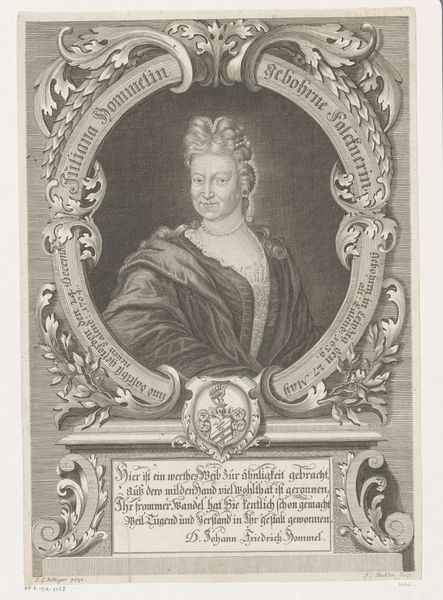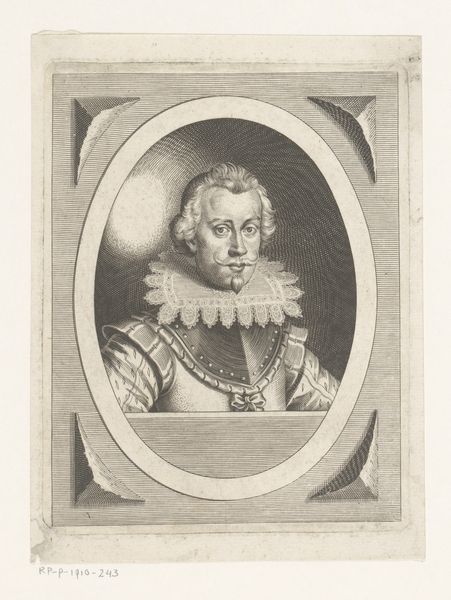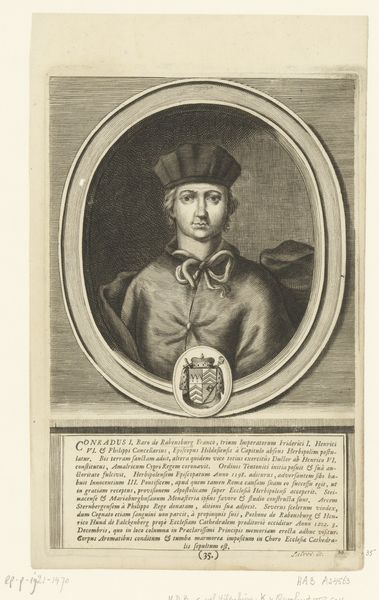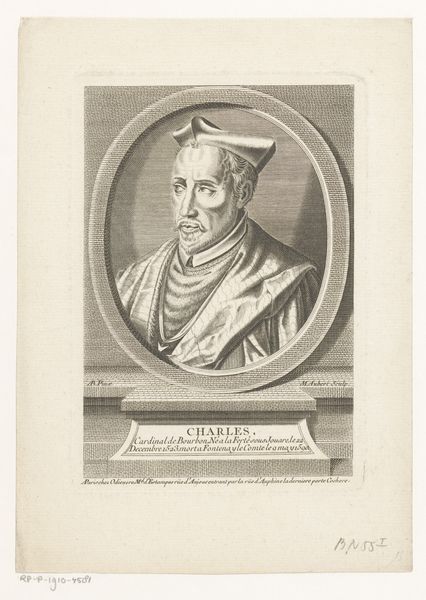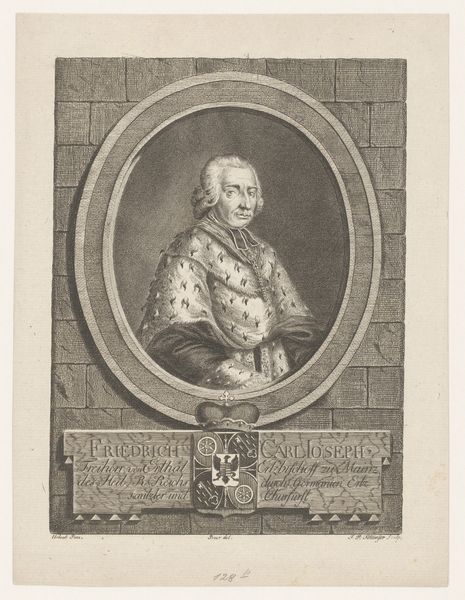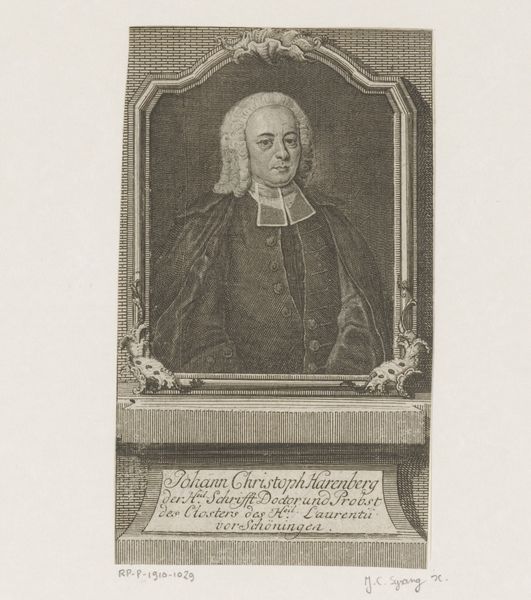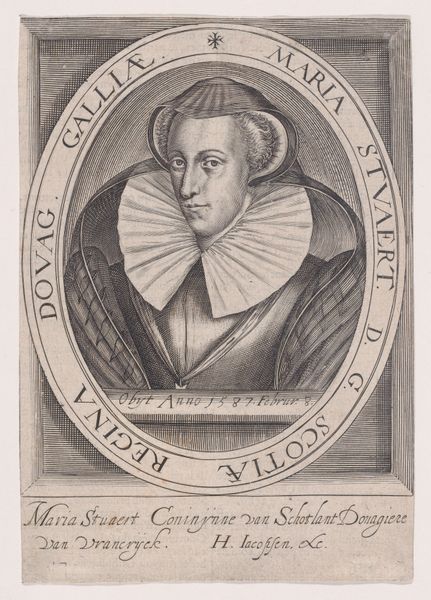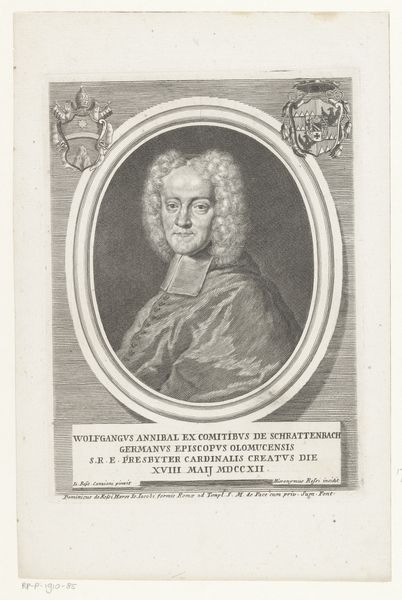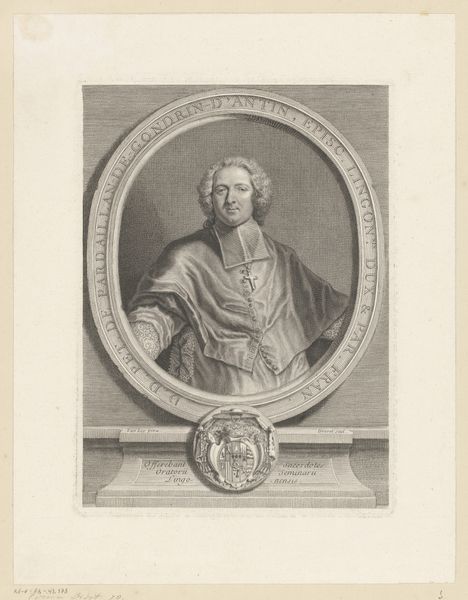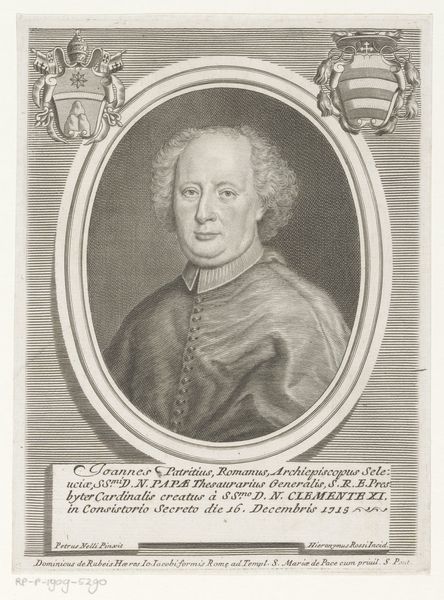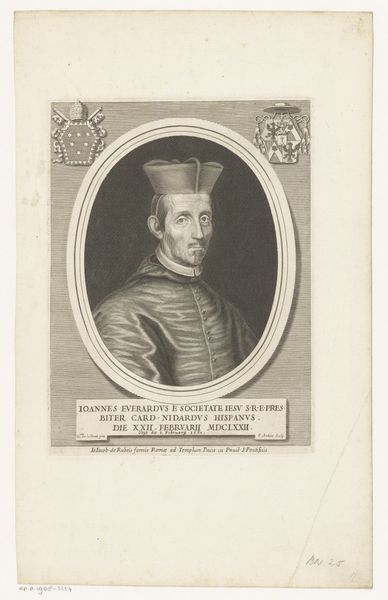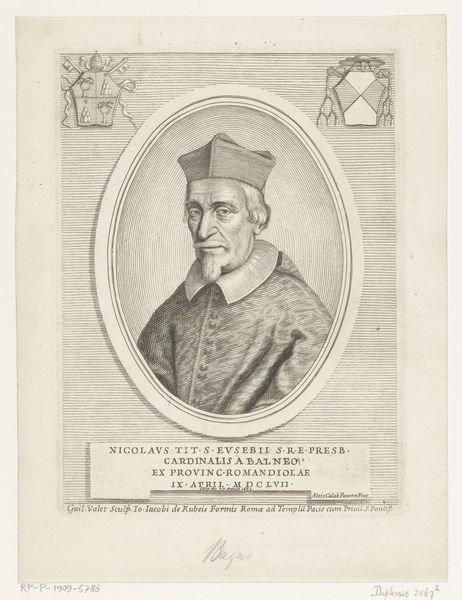
print, engraving
#
portrait
#
baroque
# print
#
history-painting
#
academic-art
#
engraving
Dimensions: height 210 mm, width 160 mm
Copyright: Rijks Museum: Open Domain
Curator: The work before us is a print, likely an engraving, depicting Cardinal Orazio Filippo Spada. Girolamo Rossi is credited with this piece, sometime between 1706 and 1762. It's currently held at the Rijksmuseum. What are your initial impressions? Editor: There's an undeniable solemnity to it, isn’t there? It almost feels… oppressive. Perhaps the way his image is so neatly contained in the oval makes me uneasy. Curator: I find it fascinating how the oval mimics a papal seal. He is framed within symbols of the church, trapped or safe in it perhaps, or more likely a strategic inclusion in his propaganda machine. To what extent this echoes actual religious devotion or service is unclear to me. Editor: It does box him in, though. Given the baroque context and the absolute power of the church at the time, it speaks of both privilege and constraint. His identity seems inextricably tied to his position within the Church. I find myself wondering what choices he actually had. How much of his 'self' was truly his? Curator: Absolutely. That oval frames his identity, solidifies it for his audience, which would already perceive him within strict religious constraints. The baroque adored iconographic control for communication to a wide and usually uneducated demographic. Symbols acted almost like triggers or visual mnemonics that spurred action from collective memory and belief. His garb alone speaks volumes in iconographical understanding: each tier on his headgear communicates something in and of itself. Editor: And those two coats of arms that flank him at the top! The Spada family ensured no one would forget his lineage either, despite the humble image they sought to convey through the vows of the church! He's positioned to represent both earthly and spiritual authority... a dangerous combination then as now. And who gets hurt when those in power cannot reckon with the nuances of individual agency beyond structural hierarchy? Curator: Indeed. What resonates is how this portrait operates as both a depiction of an individual and as a representation of an entire system. These emblems of power aren’t simply aesthetic; they are signifiers of complex theological and political ideas. It offers a historical window into the psyche of power structures through its visual presentation. Editor: Reflecting on it, it reveals not just an individual portrait, but a visualization of systemic power—a constant negotiation between the person and the institution. Curator: A vital piece for considering the ongoing dance between personal identity and societal structures.
Comments
No comments
Be the first to comment and join the conversation on the ultimate creative platform.
